Ever since working from home has become a thing, desks have left the office and become a part of the household. With a boom in content creation and streaming, computers, too, have become relevant outside of work. Whether you want to build a desk for your home office or a station for your online gaming sessions, wood desks are often recommended. But what kind of wood?
The best types of wood for computer desks include Ashwood, Oak, Maple, and Cherry. In Pacific Northwest, wood like Teak and Cedar is better for its moisture resistance. If you’re looking for a prestige desk, you can use Walnut, Elm, Hickory, or Zebrano.
I consider Oak as the best all round wood for a computer desk.
In this article, you will learn more about the 15 best desk woods alongside their respective pros and cons. By the end of this post, you will know which type of wood is ideal for your computer desk and why. But before that, let’s list the 15 best woods for computer desks.
- Ashwood
- Elm
- Walnut
- Teak
- Cherry
- Maple
- Rosewood
- Birch
- Oak
- Cedar
- Zebra Wood
- Pinewood
- Bamboo
- Hickory
- African Blackwood

Ashwood
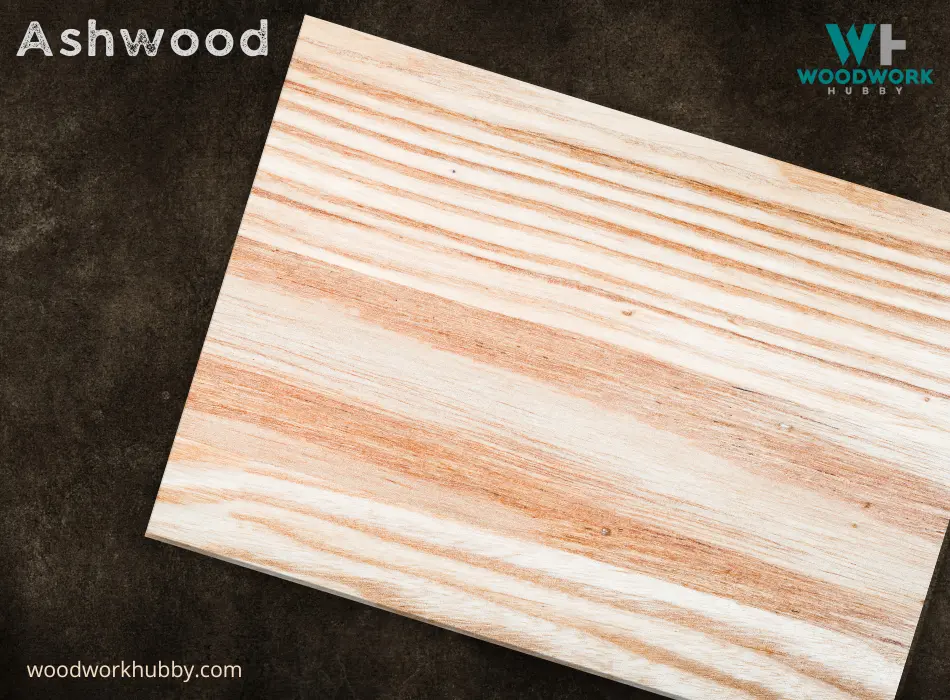
Ashwood is surprisingly durable for its price and easy to work with. It is great for building desks because of its ability to take punishment but also because it is also visually appealing. It might not have the grain and the hue of mahogany or Oak, but it does have character.
Its grain is hard to notice because of its smoothness, which can make for a less distracting desktop. The grain runs straight along the length of its planks, and it doesn’t peep through paint as much as some other woods in this post.
A video that talks about the difference between Oak wood and Ash wood.
| Pros of Ashwood | Cons of Ashwood |
|---|---|
| Cheap despite being durable | It is hard to find in some states |
| Can hold the same weight as Oak and Maple | Not all types of ash are good for desks |
Elm
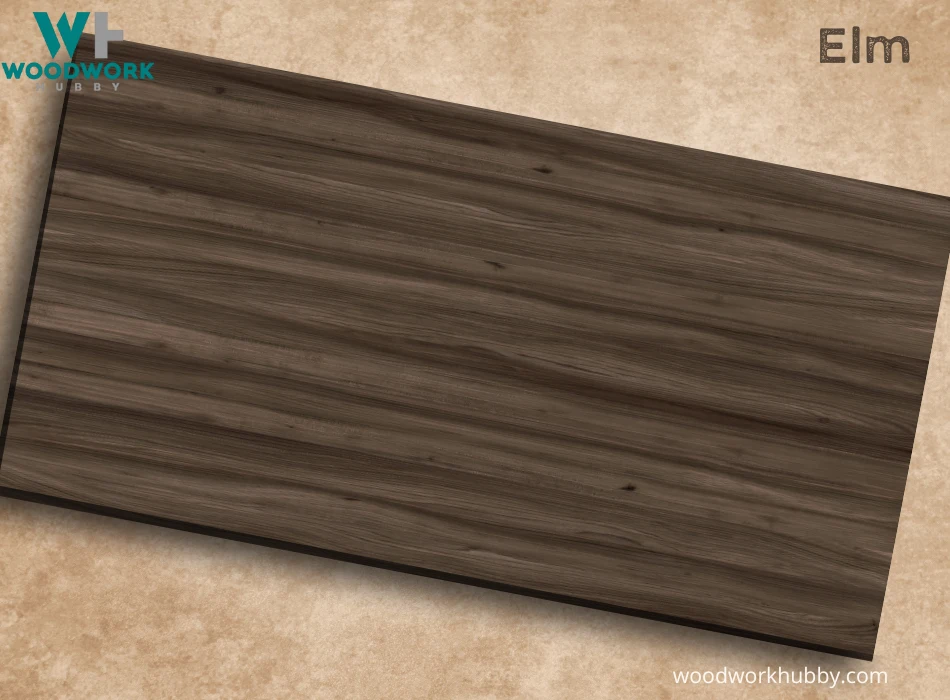
Elm is unlike common Ashwood in that it is very dark. If you don’t want to paint your desk in dark colors and actually want a desk that looks raw, then elmwood would be a perfect choice. It suits offices with pre-existing rich and rustic colors.
It bends far more than most woods in this post, so if there is a requirement to have a curvature in the desk design, elmwood can be employed. However, its flexibility is not as crucial for desk building as its grain.
The interlocking grain of elm makes it easier to cut without splitting. Moreover, it produces a beautiful texture that is highly marketable.
| Pros of Elm Wood | Cons of Elm Wood |
|---|---|
| Elm Wood is quite durable and can take plenty of punishment | Elmwood takes a long time to dry |
| It is a heartwood with a very notably mute grain | It is vulnerable to insects |
| Its texture is smooth to the touch, making it easy to keep clean/clear | Its flexibility can limit its load-bearing capacity |
| It has decent workability. Intermediate woodworkers can make advanced masterpieces from it. | It is generally more expensive than most desk woods |
Walnut
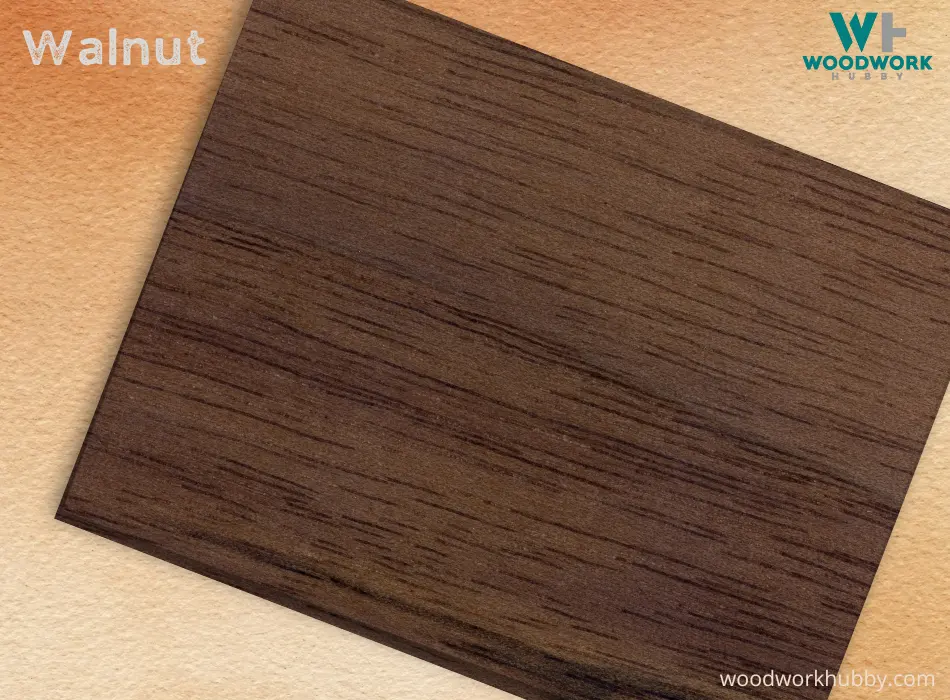
Walnut is yet another dark wood that can be used for desk building. However, its price doesn’t match the general market, which is why it is best left for high-end clientele like executives. Its rich dark hue also makes it ideal for such offices.
A walnut desk in a junior executive’s office would look out of place. Woodworkers prefer this wood because of its high workability. Its texture is hard to notice, but its color is not. The wood stains well, but a decent finish is all it really needs.
| Pros of Walnut | Cons of Walnut |
|---|---|
| Visually appealing grain with a chocolatey appearance | It is too costly by desk market standards |
| Imperfections aren’t as evident on it | While durable, it can incur dents |
| It is sustainable if acquired by the right means | It is difficult to install for most novice woodworkers |
| It resists molding despite being vulnerable to moisture | It is hard to move because of its weight |
| It can sustain heavy use because of its durability | It can be vulnerable to moisture and weather changes |
| It is quite stable and shock-resistant | It needs annual resealing to maintain its rich appearance. |
Teak
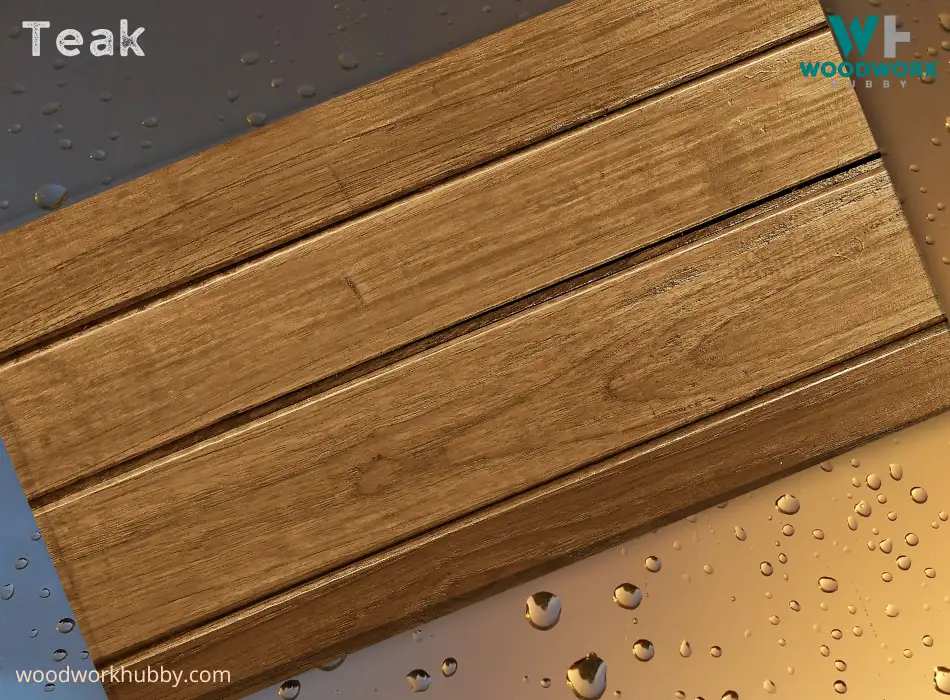
Teak is a naturally moisture-resistant wood that is fit for desks in humid coastal environments. It is generally used in marine applications because of its ability to resist warping and getting damaged upon contact with water. Since desks are often indoor furniture items, teak wouldn’t be seen as desk wood in dry states like Nevada and Arizona.
However, it would be the perfect desk wood for places in the coastal pacific northwest. If you reside in Washington, DC, for instance, you might as well make teak your only primary desk lumber choice.
| Pros of Teak | Cons of Teak |
|---|---|
| Teak is strong and durable enough for even heavy computer setups | It is costly because of its marine application demand |
| Teak isn’t vulnerable to insect attacks | Teak is rare in common lumber markets |
| Teak’s density allows it to hold up heavier loads | Its internal strength can dull blades |
| It is pretty hard to topple over | It requires more maintenance than average hardwood |
Cherry
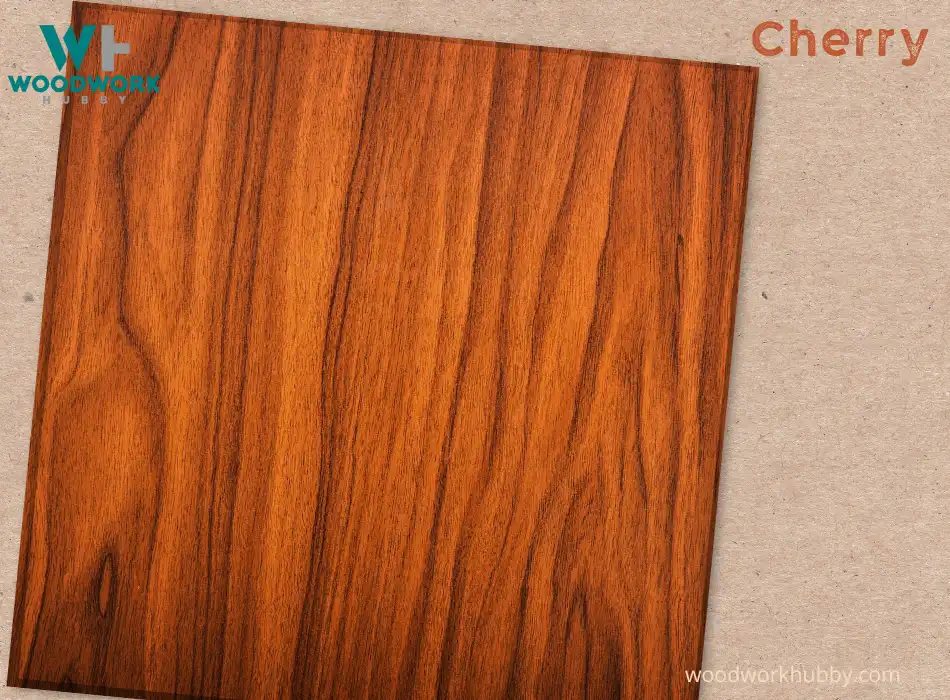
Cherrywood is perhaps more popular than cherries, at least in the united states. Cherry is a reddish-brown hardwood that even non-woodworkers can recognize at a glance. It has a smooth grain that results in a texture that is hard to feel but very easy to see.
A video that talks about the characteristics of Cherry wood.
It is excellent for author desks and desks for small business owners because it ages very well. Often, Cherry furniture can be found at its best when it is an heirloom.
| Pros of Cherry | Cons of Cherry |
|---|---|
| Very conducive to a polished finish | Extremely expensive |
| Admired universally for its appearance | It can incur wear and tear over time |
| It can bear a load of computer and office accessories with ease | It can incur scratches if used carelessly |
Maple
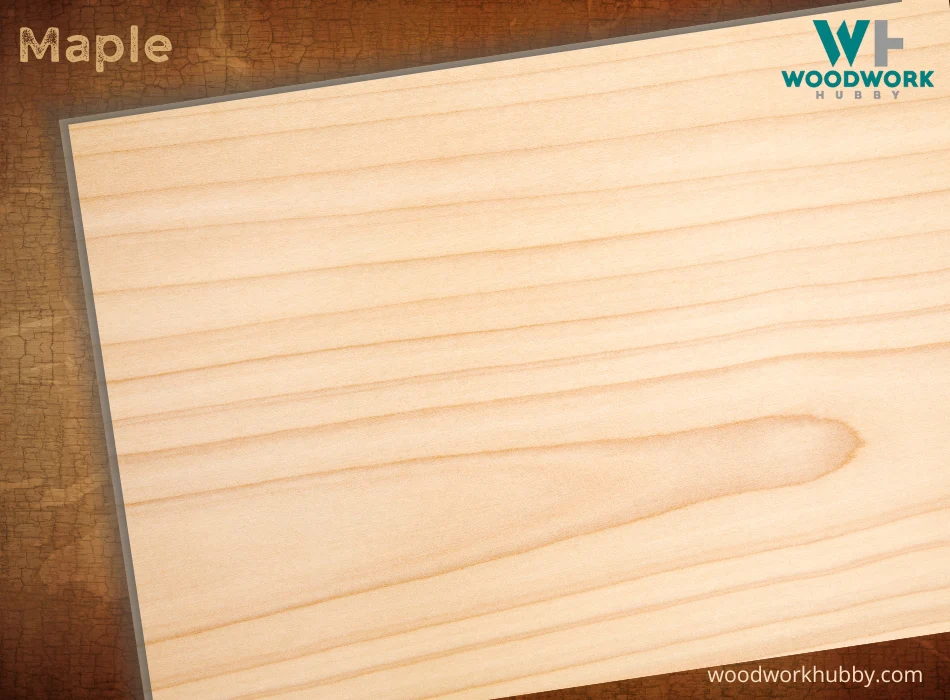
Best left for expensive clients, Maple is one of the hardest desk woods in existence. It is often adopted because of its smooth grain pattern. If you do not like Maple’s creamy color, you can stain it any way you please. But again, being an expensive wood, it is best finished as it is.
Overall, the best aspect of maple desks is that they are very difficult to damage. Maple’s durability makes it highly sought after, and if you make maple desks, you can be sure they will sell more easily.
| Pros of Maple | Cons of Maple |
|---|---|
| Relatively inexpensive and can be used for large desks | It cannot take as much punishment as other wood types |
| Its straight grain makes it easier to cut without splitting | It is vulnerable to insect attacks and can get easily damaged |
| It has visually interesting swirls | It is one of the harder woods to stain |
Rosewood
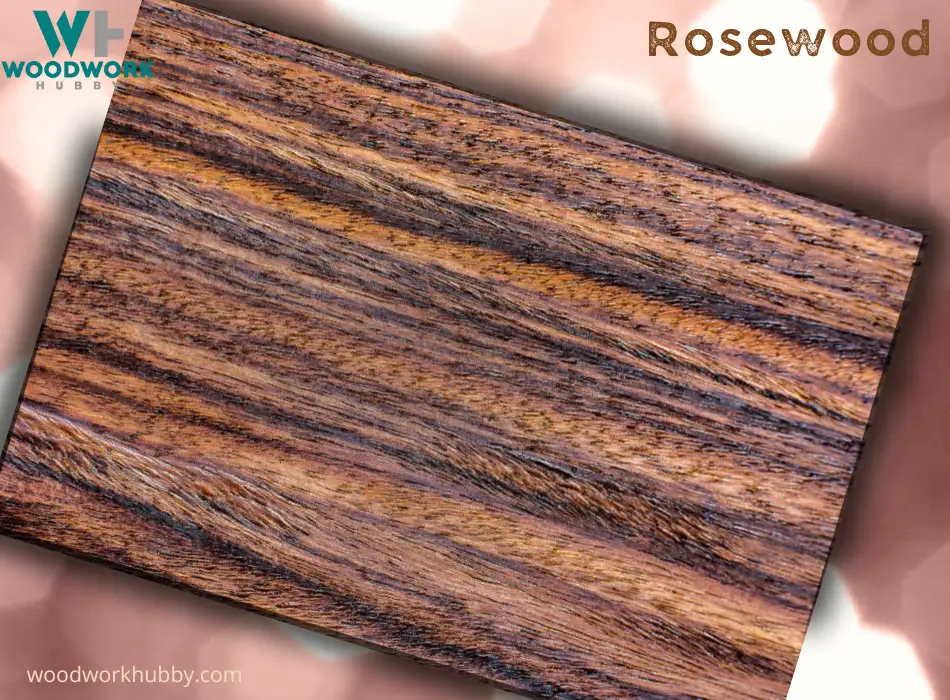
If you want to specialize in making desks out of one particular lumber, rosewood would be a great candidate for two reasons.
Firstly, it is not used as often for furniture making in the US. This can help you stand apart from the average furniture seller.
Secondly, this wood comes in a range of appearances based on the type of rosewood you’re working with. And almost all of them are great for furniture making. It is used in high-end desks in the eastern world.
Given its “luxurious at first glance” look, thanks to its rich dark color, it is also very likely to win an American client’s heart.
| Pros of Rosewood | Cons of Rosewood |
|---|---|
| It is a corrosion-resistant wood type | It isn’t as easily available |
| It can retain its appearance for a longer period | It costs more than average furniture wood |
| It has decent strength and can easily bear a computer’s weight | It is difficult to move and can be hard to install |
| It is smooth to the touch and beautiful to look at | It might deform with careless use |
Birch
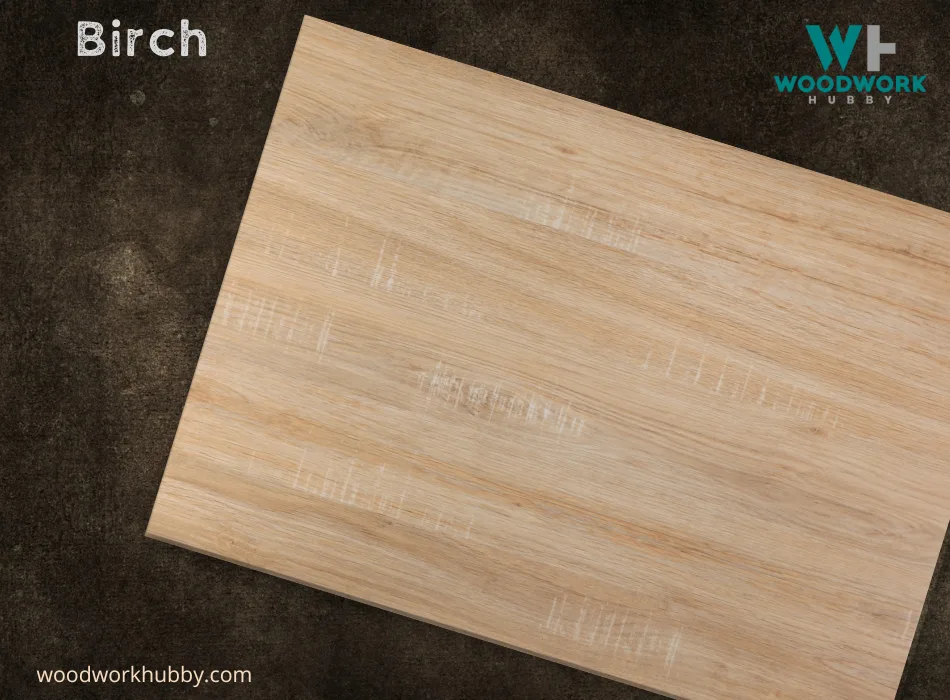
If you think you would regret using an expensive wood type for a desk that’s supposed to be painted, use birch.
Birchwood isn’t too expensive yet is durable enough to outperform some of the best wood types that are far more expensive.
It is straight-grained and can also be stained to mimic other wood types. If your office furniture is made from another type of lumber that is not ideal for desks, you can use Birchwood and stain it. It is easy to see that Birchwood isn’t the most rustic-looking choice but do check out the birch core, as it is reddish.
| Pros of Birch | Cons of Birch |
|---|---|
| Its grain is visually interesting | It is not moisture-resistant |
| It is relatively cheap | It can be cracked by heat or damaged by insects |
| It is very easy to paint | It can incur wear and tear easily |
Oak
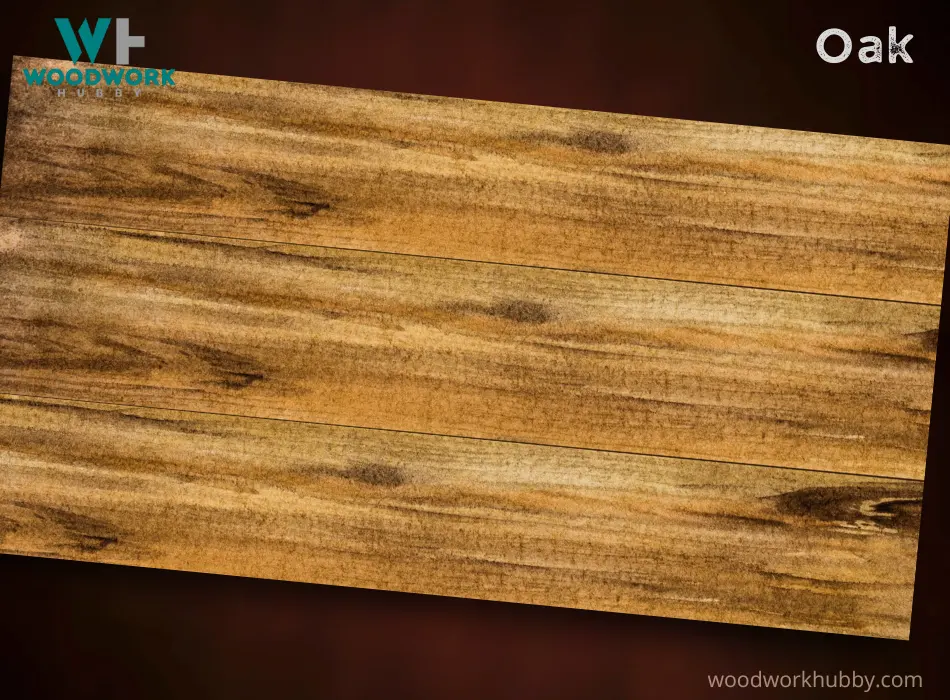
Oakwood is one of the go-to options for almost any load-bearing furniture project. This is because of the hardwood’s durability. Oak Wood types used in furniture options include Red Oak which has a reddish brown appearance, and White Oak, which has a more creamy appearance.
Red Oak’s Janka hardness is 1260 while White Oak’s hardness rating is 1360, making both of these wood types overqualified for common desks. Oak wood’s straight grain alongside its rings makes it unmistakable to spot and ideal for prestige desks.
| Pros of Oak | Cons of Oak |
|---|---|
| It is highly durable and very sturdy | It might not be the most expensive wood, but it isn’t cheap either |
| It is easy to stain and finish but looks great regardless | It is too heavy for a casual computer desk |
| It is fire-resistant, which can be a plus if there is an electric spark | If not maintained properly, it might shrink or crack |
Cedar
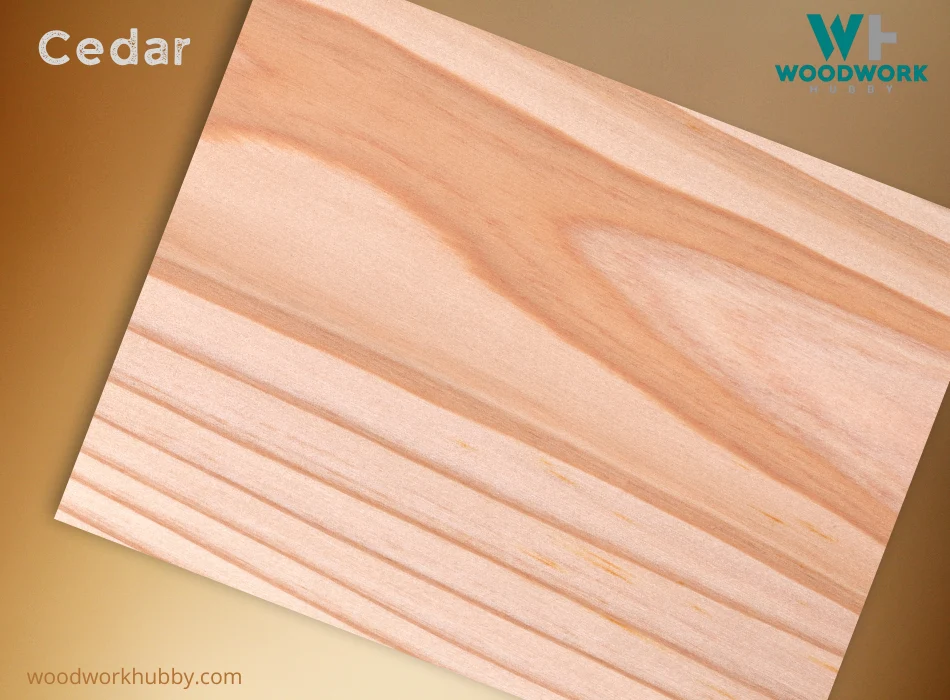
Cedar is more commonly used in fences and outdoor benches than in desks because it is moisture-resistant. However, it is perfect for indoor office furniture for highrises in the pacific northwest for the same reason it is perfect for outdoors elsewhere.
Aside from its ability to resist moisture, Cedar is also desirable because it is easy to work with and has a unique texture. Its range of colors grows from pale red to darker colors, its grain is straight, and its texture is coarse, giving it an undeservedly expensive appearance.
| Pros of Cedar | Cons of Cedar |
|---|---|
| Resists rot, decay, insect attacks, and water damage | It must be sealed annually |
| It has an attractive appearance | It is not dense enough for heavier PC setups |
| Even beginners can find it easy to work with | It is a softwood and can ultimately scratch very easily. |
Zebrano
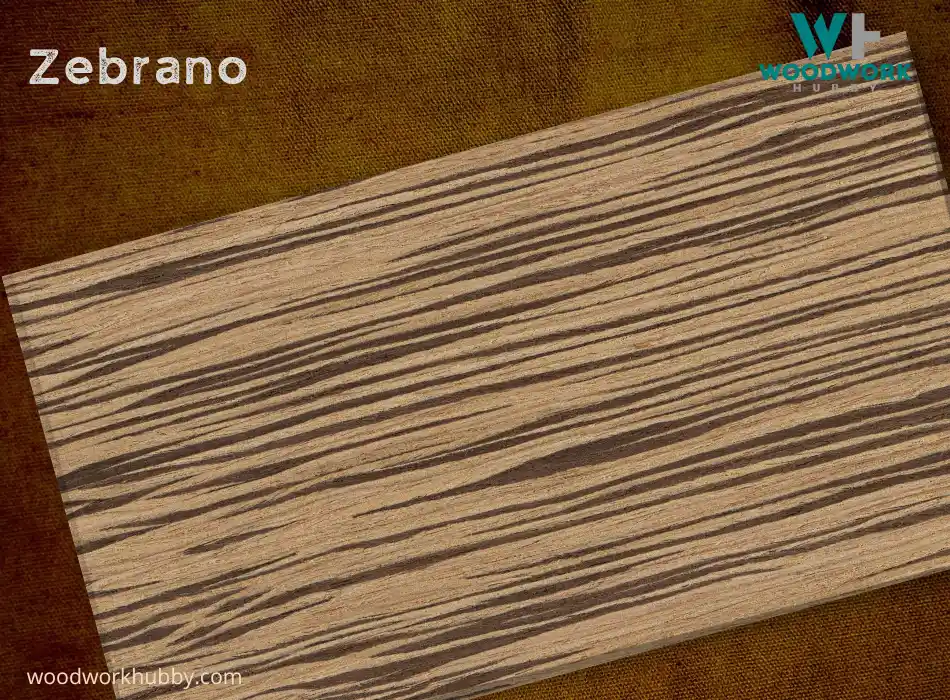
Zebrano or Zebrawood is titled after its appearance. This wood has zebra-like black stripes with Cappucino to cream-color wood base. Its visual distinctiveness and exotic origin make it quite a niche wood type. So it is best left for specialized desks for clients who prefer products that stand apart.
Zebrawood is one of the most popular exports from central Africa and is known for its appearance first.
However, it is also one of the hardest hardwoods on this list. Its Janka rating is a whopping 1830. It has an interlocked gain but can also be wavy, and it has a coarse texture that peeps through stain and paint.
| Pros of Zebrano | Cons of Zebrano |
|---|---|
| A very distinct pattern that is hard to miss | Narrows down the market to the few who like its appearance |
| It is a very strong wood that resists wear and tear | It is hard to source because it is grown in Africa |
Pinewood
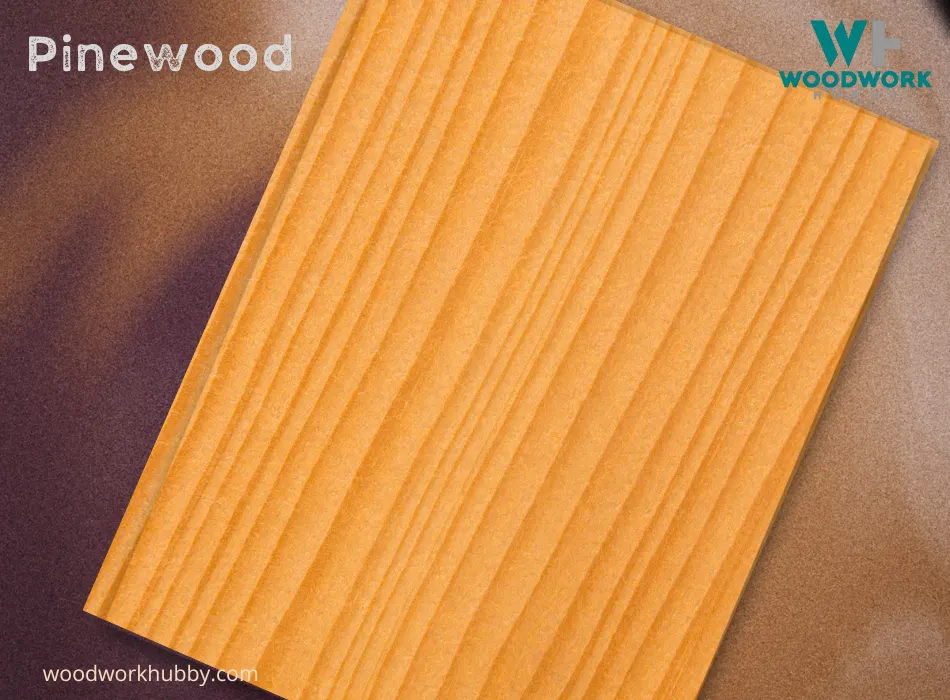
Not all desks are meant to be sturdy and capable of bearing heavy loads. Some desks are much better valued because they are easier to move. Often, these desks are constructed with light non-ferrous metals and have a pinewood desktop.
Even a desk made entirely out of pinewood is very easy to move. Aside from being lightweight, pinewood’s other desirable properties include its rustic appearance and ring-porous look. Above all, it is a straight-grained wood that is easy to work with.
| Pros of Pinewood | Cons of Pinewood |
|---|---|
| It is not very costly | It can incur wear and tear even with normal use |
| It is easy to work with | It is limited to only medium-weight setups |
| It is light on the environment and in its actual form | It is hard to select high-quality lumber from pine |
Bamboo
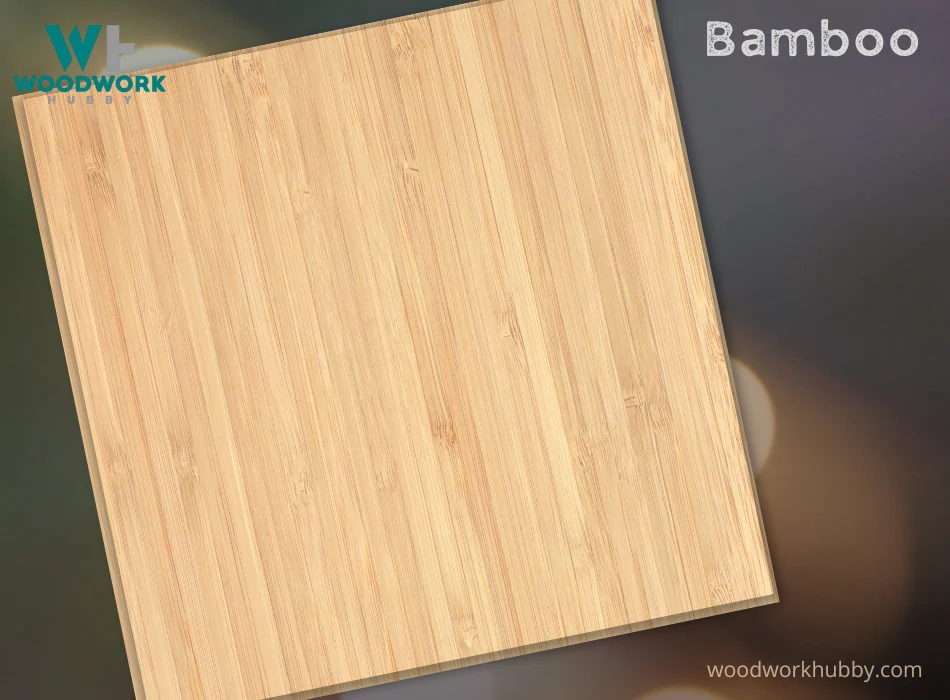
Bamboo might be a surprising entry in this list because it is technically not wood. It is grass that is practically the same as wood. It might seem weak because a stalk of bamboo is easier to bend than the trunk of even a softwood tree. But if you compare bamboo and wood on a board-for-board basis, it wins against Oak and Ashwood.
Its Janka hardness is 1200 on the low end and 1400 on the higher side. What does this mean for desk-making? Bamboo can be acquired more cheaply and can bear more weight than some north-American hardwoods.
It is an economical choice for budget desks and will sell quickly in a demography that doesn’t care for wood types. There is no wood-like grain on bamboo, and its texture is relatively uniform.
| Pros of Bamboo | Cons of Bamboo |
|---|---|
| It is quite strong and highly durable | It shrinks and swells with ease |
| It is hard to break with the weight | It is easy to scratch |
| It is generally fire-resistant | It is technically not even wood |
Hickory
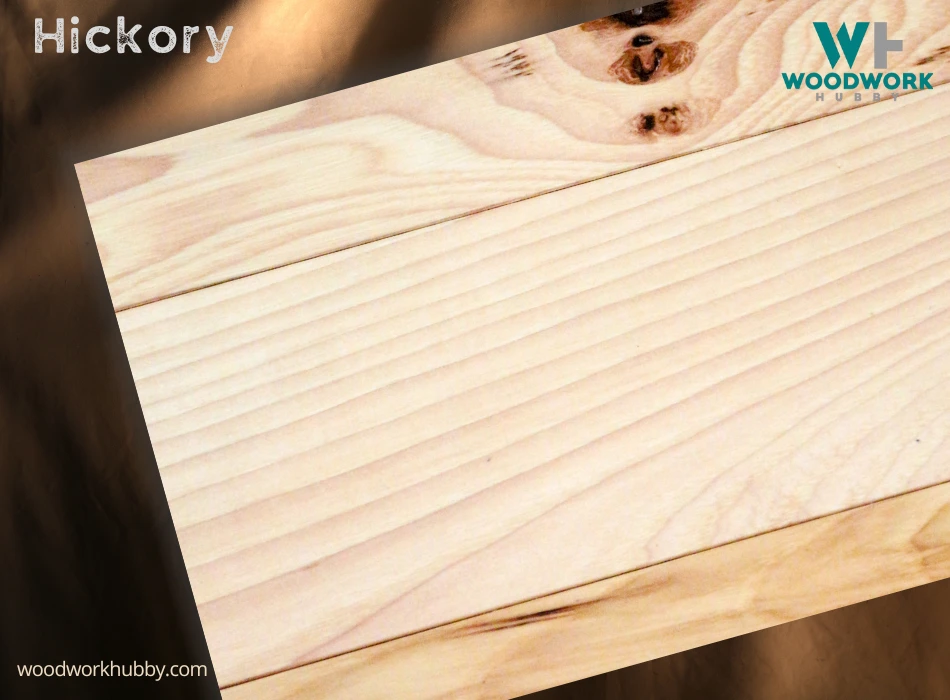
Hickory is one of the more durable and luxurious woods on this list. It ranges from pale to deep cappuccino color and is often admired for its visual appeal and ability to resist scratches. That’s why it is often used in veneering. Hickory wood can be used for just the desktop or for the entire desk.
It is one of the hardest hardwoods, with a Janka rating of 1820! It might be harder to cut because of this, especially if you use hand tools more often than power tools. Hickory has straight grain for the most part with some level of waviness. The waves are often visible and are a part of the wood’s charm.
| Pros of Hickory | Cons of Hickory |
|---|---|
| Among the more prestigious lumber types | It is very expensive |
| It resists wear and tear | It can be too heavy to move or install |
African Blackwood
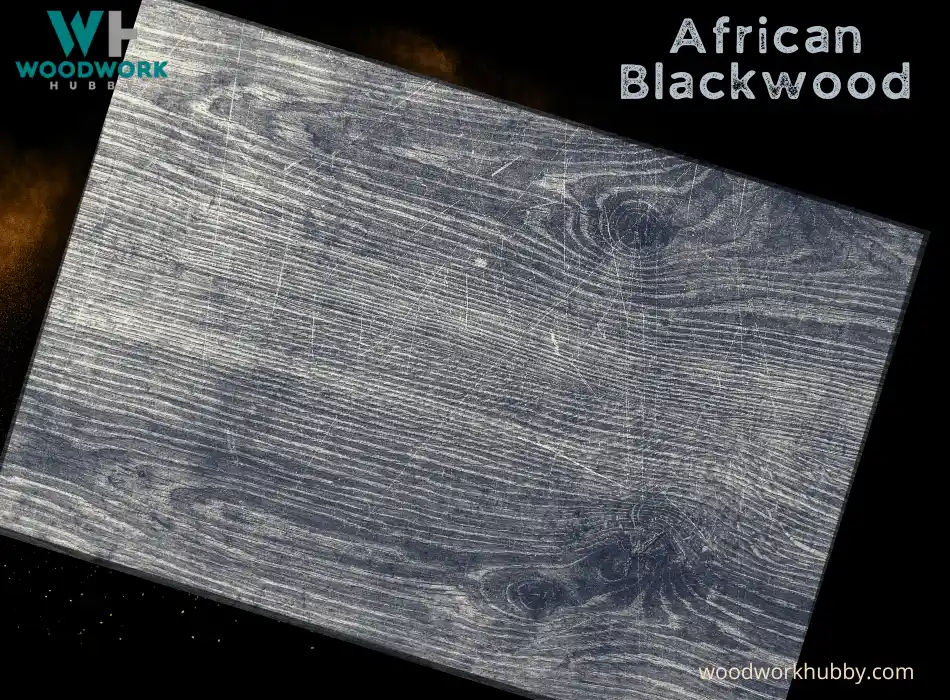
The final word on this list and the second one of African origin besides Zebrano are African Blackwood. This wood is a close alternative to ebony, which is one of the most expensive woods in the world. African Blackwood has a deep black color which opens up plenty of doors for visual possibilities, including contrast and cohesion.
In other words, an African blackwood desk can fit in a white room as easily as it would in a room with plenty of black furniture. African blackwood has a straight grain, and its fine texture wouldn’t be visible, even if it were coarse, due to its non-reflective appearance.
| Pros of African Blackwood | Cons of African Blackwood |
|---|---|
| Rich dark appearance | Not everyone wants a black desk |
| It is very strong and can hold the weight of multiple PCs | It is pretty expensive and rare |
Desk wood FAQs
Which wood is best for the office desk?
Oak is the best wood for an office desk because it balances durability with economy and aesthetics. It is good-looking, can bear a load, and is considered a prestigious choice.
What is the best solid wood for a computer desk?
Ash wood is the best solid wood for a computer desk because it can hold up a computer and PC accessories without buckling, and it is not as expensive as other hardwoods.
What is a good material for a computer desk?
Maple, Ashwood, and Oakwood are all excellent materials for a computer desk. Ashwood can be used for broader desks because of its price. Maple and Oak can give your computed desk a touch of tradition.
How thick should a computer desk be?
A good computer desk is 1-inch thick, but the specificity of the desk thickness depends on the material. For instance, plywood desktops are often 0.7 mm thick at a minimum, while some solid wood desks are 1.25 inches thick.
Where to buy wood for the desk?
You can buy wood for a desk from Home Depot or your local lumber shop. Alternatively, you can shop desk wood online on stores like Amazon and even on Etsy.



